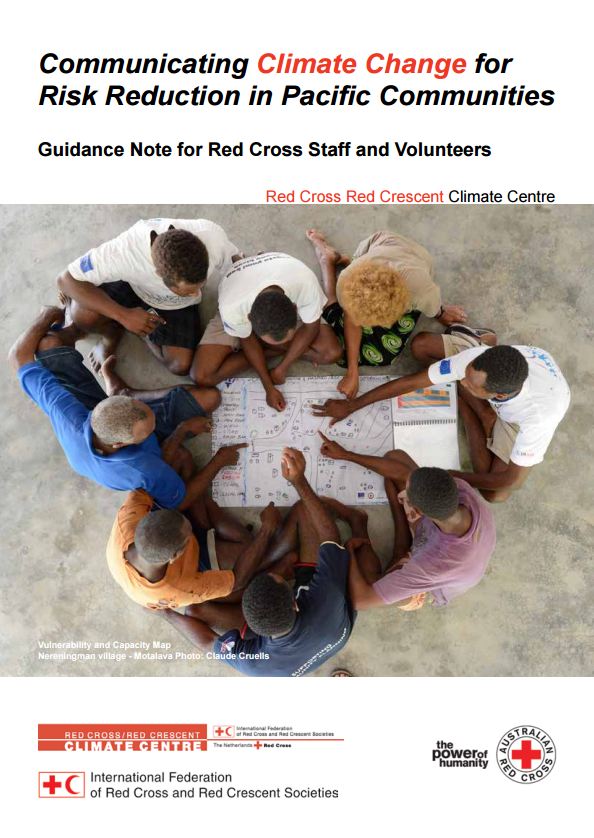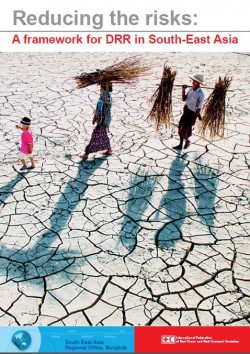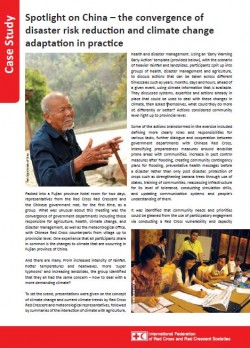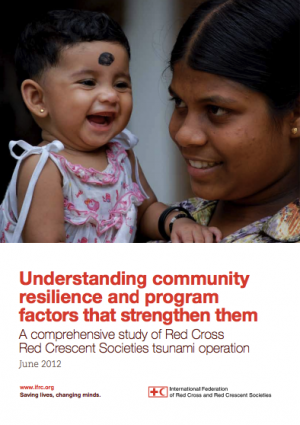Terms of Reference of Disaster Management and Risk Reduction Technical Working Group of the Regional Community Safety and Resilience Forum
- Disaster Management and Risk Reduction Technical Working Group | see TOR
- Health Technical Working Group | see TOR
- Organizational Development and Youth Technical Working Group | see TOR
![]()
Reducing the risks: A Framework for DRR in South-East Asia
Purpose
This document is a South-East Asia specific disaster risk reduction framework aimed at providing more specific guidance to National Societies.
Overview
The elements identified as key Red Cross/Red Crescent contributions to disaster risk reduction as a key action in building community safety and resilience are as follows:
- Risk-informed humanitarian response. The provision of relief and the satisfaction of immediate needs following a disaster, as well as follow-on recovery activities aimed at helping communities get back on their feet, are undertaken in a way that works towards meeting longer-term risk reduction objectives.
- Country-specific mitigation, prevention and adaptation activities. Most National Societies have implemented community-based programmes to support communities to better prepare for, and respond to, disasters by building on existing capacities and maximising additional resources.
- Sector- based programming to build across the disaster management spectrum. Disaster risk reduction is a cross-cutting and complex issue. No individual organisation or sector can address it alone; it requires collective efforts from all parties, public understanding, scientific knowledge and careful development planning.
- Core cross-cutting components of community safety and resilience. The following are components that are considered essential to every National Society in addressing community safety and resilience: risk assessment and identification and the establishment of community-based early warning and prediction; community-based disaster preparedness; advocacy, education and awareness raising; strong auxiliary relationship with national and local government; partnerships with international, governmental, nongovernmental and community-based organisations.
- Proposed activities with key indicators to ensure the integration of gender and diversity are highlighted in Annex 2 from page 22.
Usage: Guidance for project implementation
Audiences: Technical staff
![]()
Spotlight on China – the convergence of disaster risk reduction and climate change adaptation in practice
Purpose:
Overview:
Usage:
Learning from experience
Audience:
Communication staff, Volunteers
![]()
Minimum Standard Commitments to Gender and Diversity in Emergency Programming – Pilot Version
Purpose
This checklist provides a quick tool for assessing compliance with the Minimum Standard Commitments in Emergency Programming for Red Cross / Red Crescent staff and volunteers in: emergency health; food security; water, sanitation and hygiene; emergency shelter; livelihoods; non-food items and disaster risk reduction. It serves as a tool for organisations to mark progress and identify their next steps.
Overview
The Minimum Standard Commitments for each sector are based around a framework of: dignity; access; participation; safety; and internal protection systems. The checklist provides specific indicators which an organisation can use to rate its progress (achieved, partially achieved, not achieved and not applicable), justify its score and propose next steps.
Important Note
This document is the key operational document for IFRC and Red Cross Red Crescent National Societies for gender and diversity. Over the past two years and through the leadership of Gender and Diversity Focal Points in Southeast Asia, the Minimum Standard Commitments have been tested at national and regional level, through mainstreaming the in VCA processes, integration in NDRT & RDRT capacity building and deployments, emergency response, gender-based violence research, sensitisation on internal protection systems such as the Code of Conduct and Child Protection policy, and linking with Community Engagement and Accountability work in the region.
From these experiences, and experiences globally, it is time to revisit the standards and see where we can improve the guidance to ensure they continue to be practical and relevant! We very much encourage and welcome your comments to this guidance note through this google doc link. The guidance is split into key sectors: Health, Food Security, WASH, Emergency Shelter, Livelihoods, Non-food items and DRR, so please feel free to feedback on the sector you are most familiar with. The deadline for comments is 15th August 2017.
Usage: Guidance for project implementation
Audiences: Technical staff
![]()
Understanding community resilience and program factors that strengthen them: A Comprehensive Study of Red Cross Red Crescent Societies Tsunami Operation
Purpose
This document outlines characteristics of safe and resilient communities, including presenting case studies of communities which received Red Cross / Red Crescent support through its Tsunami operation, as well as factors and lessons in successful community-based disaster risk reduction (CBDRR) programming.
Overview
A safe and resilient community:
- Is knowledgeable and healthy: it can assess, manage, and monitor its risks, learn new skills, and build on past experiences.
- Is organised: it can identify problems, establish priorities, and act.
- Is connected: it has relationships with external actors (family friends, faith groups, government) who provide a wider supportive environment, and supply goods and services when needed.
- Has infrastructure and services: it has strong housing, transport, power, water, and sanitation systems. It has the ability to maintain, repair, and renovate them.
- Has economic opportunities: it has a diverse range of employment opportunities, income and financial services. It is flexible, resourceful and has the capacity to accept uncertainty and respond (proactively) to change.
- Can manage its natural assets: it recognises their value and has the ability to protect, enhance and maintain them.
Key determinants of a successful CBDRR programme include: enabling environment; programme design; and programme management.
Usage: Guidance for project implementation
Audiences: Technical staff
![]()







